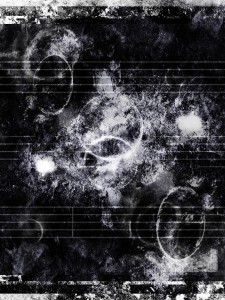
In addition to being a Tolkien enthusiast and an artist, Cockshaw is also a film score geek. In this article he draws on the analysis of musicologist Doug Adams to reflect on how Shore deftly employs musical constructs to bring Middle-earth to our ears.
The Ring resounds in Middle-earth
An artistic response to the thematic theatrics of Howard Shore’s film scores
by John Cockshaw
A scene quietly unfolds onscreen.
A well-known wizard sits in front of a warmly-lit hearth in concerned contemplation,
The focus of his thoughts is simply a ring.
The orchestra stirs gently,
The strings swell ever so slightly,
An ancient-sounding musical theme is heard, circling with a breath-like regularity.
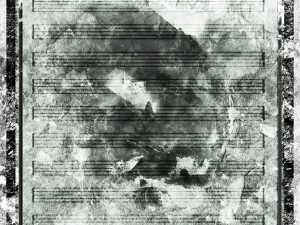
This is a theme of many guises and permutations over the course of a 10 hour plus film score that gives a musical voice to that most central of objects in Tolkien’s Middle-earth; The One Ring. Through this theme the ring of power is bestowed with anthropomorphic qualities and assumes its central spot in the weighty drama with ever increasing diversity as the storytelling progresses.
Howard Shore’s film score taken as a telling of J.R.R Tolkien’s The Lord of the Rings in its own right is a tremendously vast operatic work, a masterful orchestral powerhouse of a score written in the digital age of film music. Tied to the film trilogy it works beautifully and away from it works exactly the same on account of its multi-textured and thematically rich presentation. It is a kingly gift to devotees of Tolkien’s books as well as enthusiasts of the film it accompanies and also to lovers of grand symphonic film music who might lament the lack of that trend in film music today. Each of the separate scores for The Fellowship of The Ring, The Two Towers and The Return of the King form a separate act in a unifying and immensely satisfying whole.
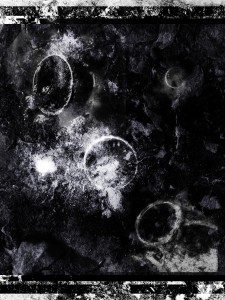 Variation on a theme of The Ring of Power (2014) by John Cockshaw.
Variation on a theme of The Ring of Power (2014) by John Cockshaw.Concert performances, lectures, a symphony, a whole book by Doug Adams and a trio of ‘complete recordings’ releases have sprung from this grand musical work — the legacy of Shore’s work has extended much further beyond the film trilogy it accompanies, but of course wouldn’t have been afforded the necessity or budget to come into being without it.
There will always be other fine orchestral interpretations of Tolkien’s Middle-earth to give it company, such as Johan De Mej’s Symphony No. 1 The Lord of the Rings, Stephen Oliver’s music for the much-loved BBC Radio adaptation and Leonard Rosenman’s score to the Ralph Bakshi animated film. But none of these offer such an extensive effort at world-building through music that Shore achieves, and that is another particular aspect of Howard Shore’s score that defines its brilliance.
The benefit of in-depth planning and roughly a year-long period of preparation for each of the film scores is a circumstance that happens all too rarely on film projects simply for the lack of time, impossibly short deadlines and other conspiring circumstances. Shore’s The Lord of the Rings is a product of its unique circumstances with the composer being involved in the film production from an early stage in its development. Canadian composer Shore came to the production with prior experience of composing music for literary adaptations and approaching projects with an operatic sensibility.
In his 2010 book The Music of The Lord of the Rings Films: A Comprehensive Account of Howard Shore’s Scores Doug Adams comments that the search for the right composer for the project was a crucial element for the production team to get right, “the author’s complex literary structure required a worthy musical equivalent. And then there was the epic tale itself, overflowing with cultures, customs, friendship, sacrifice, adventure and danger.”
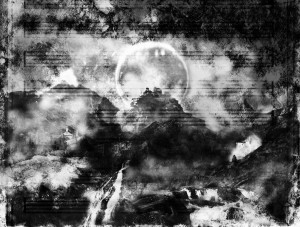
A ring resounds in Middle-earth (2014) by John Cockshaw.
It is no accident that a staggering amount of thematic and motivic components are alive in the score, approximately eighty at Adams’ and Shore’s count and more than I will even scratch the surface of here. The approach to the score involved the use of the leitmotif and an impressionistic use of themes and musical ideas, particularly for the choral writing that referenced Tolkien’s own invented languages.
Cultures of Middle-earth possess unique instrumental ranges, orchestrations and rhythms that release a whole manner of musical alchemy when they interact and collide. The softer and more introspective elements of the score express the overall themes and propel the weighty drama just as much as the most urgent clashes of orchestral might. In terms of sheer scope, let alone the aspect of a central ring being the feature, it brings to mind Wagner’s grand opera Der Ring Des Nibelungen. Shore’s work can certainly be described as Wagnerian on account of its thematic treatment but it is understood that if Shore’s Ring work has any comparative qualities to a Wagner operatic work then it is not the aforementioned Der Ring Des Nibelungen or Ring Cycle but Parsifal.
In 2011 Doug Adams contributed to a concert-based lecture Of Myths and Rings: Shore and Wagner that examined comparisons between Shore’s Middle-earth music and Wagner’s Ring opera with a focus on the mythology that acted as inspiration for both composers’ epic Ring works.
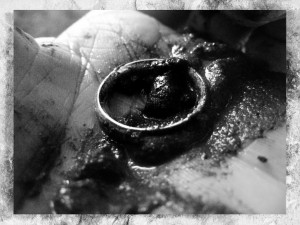
The finding of the Ring (2012) by John Cockshaw.
Given my enthusiasm for Howard Shore’s complex film score as a partner work to Tolkien’s writing it was inevitable it would extend its influence to my approach for building a collection of Middle-earth-inspired artwork. It was Shore’s music for Middle-earth as conveyed by musicologist Adams that introduced me for the first time to the idea that, conceptually, music could be described in landscape terms – that it could undulate like rolling hills, ascend great vertical heights (think Caradhras and the winding stair of the Western mountains of Mordor) and descend to deep cavernous depths of sombre dread (the Balrog deep in the Mines of Moria).
This was an incredibly useful concept to draw upon when forming an artistic approach that was very much landscape focused and used photography in an impressionistic manner. As an artist I became compelled to make small references to the analysis of Shore’s musical storytelling in my work because the score has had exactly that kind of impact. Some of my work references this music in a less oblique manner and is noted as such.
Many pieces from my body of work make reference to the titles of themes identified in Shore’s work and express ideas connected to the music. With references to the following pieces I’d like to illuminate a couple of points exactly how this has been approached alongside other art pieces that reference musical ideas found in Tolkien’s source text in general.


